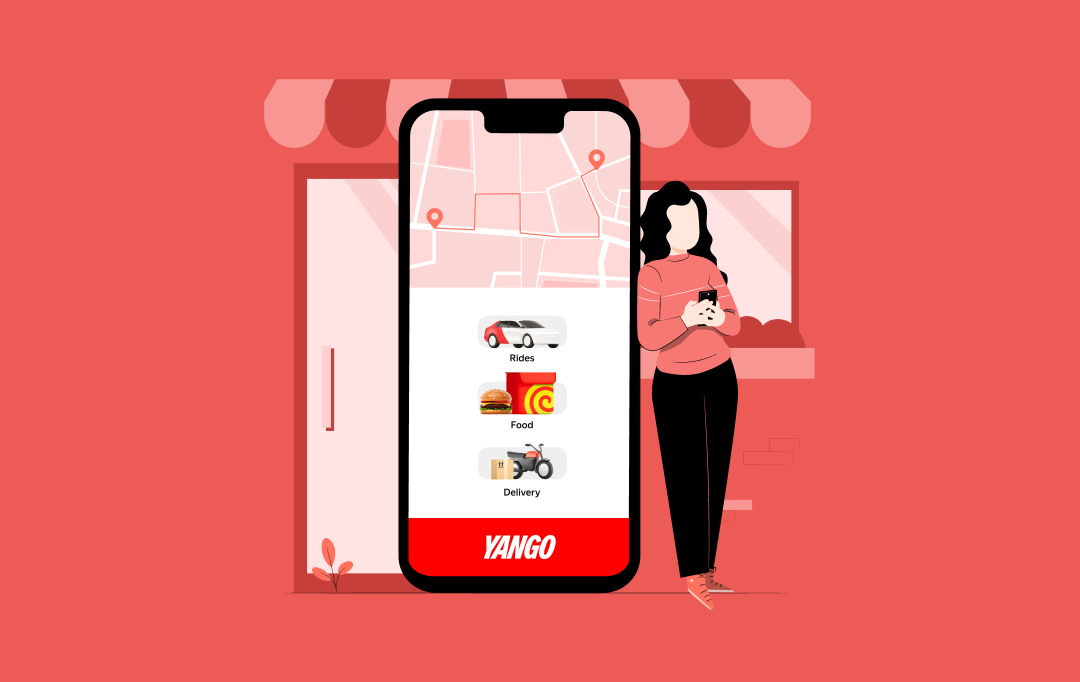- What is Rapid Mobile App Development?
- Phases of Rapid Application Development (RAD)
- Business Modeling
- Data Modeling
- Process Modeling
- Application Generation
- Testing and Turnover
- Benefits of Rapid Application Development
- Reduced Time to Market
- Faster Market Analysis
- Reduced Waste Time
- Better Quality and Low Production Cost
- Aligned IT and Business Teams
- Faster Release of Product Versions
- The Innovation Pyramid
- Cons of Rapid Mobile Application Development
- Modularization Requirement
- High Expertise Needed
- Continuous Client Engagement Necessary
- Tools for Rapid Application Development
- Design and Prototyping Tools
- User Testing and Feedback Tools
- Rapid Application Development Platforms
- When to Adopt the Rapid Application Development (RAD) Method?
- Mission-Critical Factor
- User and Client Involvement
- Divide Deliverables
- Team Pace Evaluation
- How Appinventiv Walks the RMAD Rope?
- FAQs
In the fast-paced world of digitization, waiting around for months to launch your app isn’t always an option. Imagine having a brilliant app idea that could take the market by storm, but time isn’t on your side, and the competition is increasing daily.
Now, you might think of rushing and launching a subpar app just to make a point. Or should you delay, facing fiercer competition head-on?
Well, how about neither?
Rapid Mobile App Development (RMAD) is the simple answer to this conundrum. The process allows businesses to swiftly develop and deploy high-quality apps, bypassing traditional time constraints.
In simpler terms, RMAD is a powerful tool that combines speed and excellence to create well-crafted apps. It allows you to launch your application quickly while staying ahead of the competition and delivering a seamless app experience that aligns effectively with your brand vision.
This article will help you understand the various phases and characteristics of rapid application development using the RMAD model. In addition to this, we will look at the multiple benefits of rapid application development for your business. So without further ado, let’s begin by learning about the RMAD model.
What is Rapid Mobile App Development?
Rapid Mobile Application Development (RMAD) means using code-free tools to expedite the process of creating mobile applications.
Revitalizing software development, the Rapid Application Development (RAD) model is based on the User Design cycle, which includes prototyping, testing, and refining. Unlike the inflexible waterfall approach, RAD is backed by agility and user feedback.
Despite being thirty years old, the RAD model has found renewed relevance in meeting the needs of modern businesses. It excels at creating engaging multi-device experiences, from native mobile and web applications to conversational interfaces.
Coming to the most sought-after advantage, the RMAD accelerates the app development process with the help of pre-built templates, drag-and-drop interfaces, and reusable components. This means that your concept can transform into a functional mobile app in a fraction of the time without compromising on quality. RMAD enables businesses to stay ahead in the competitive market by simplifying coding complexities and offering streamlined workflows.
RMAD can be seen as the mobile version of the RAD model, which is based on the concept that high-quality product development can be expedited by using processes such as the reuse of software components, early prototyping, and lesser formality in team communication.
According to Gartner, the market size of rapid mobile application development (RMAD) tools is expected to reach $146 million by 2024. The increasing market size for RMAD can be attributed to the growing demand for organizations looking for speed application delivery and highly customized automation workflows.
With the increasing influence of rapid mobile application development technologies, the concept of the composable enterprise is also gaining substantial traction. Thus, now is the right time for organizations to take advantage of this transformative shift and dive into a lucrative world of innovation and competitiveness.
Phases of Rapid Application Development (RAD)
Rapid Mobile Application Development (RMAD) converges innovation with efficiency to turn ideas into exceptional apps. Here are the multiple phases of RMAD:

Business Modeling
During this phase, the main business plans are decided, and their need for achievement is determined. The sort and flow of information are settled between various business models. The questions regarding what information will be required to choose the data structures and how the communication gap bridges between various business administrations are set up are resolved during this process.
Data Modeling
The next stage of the rapid application development process includes the review and analysis of information objects as compared to the business model. The credits of these data collections are characterized, and their relevance to the business is plainly mapped out.
Process Modeling
The data sets, and business models are adjusted to create a flow of information for different business models. The process for development and change are both determined. In this stage, the process structure for adding, erasing, changing, or retrieving a data set is set up in one place.
Application Generation
In this model, automated tools are utilized to construct the software. The processed and data models are converted into prototypes.
Testing and Turnover
RAD is famous mostly because of its focus on testing and turnover. Each prototype is tested by the user, and every feedback is used to optimize the current structure and integrate changes as per the feedback.
Rapid Application Development (RAD) comes in handy for a brand that is looking for a shorter launch time and has a low-feature mobile app, Rapid Application Development (RAD), with its USP of delivering quality apps in the least possible time. There are a number of reasons that come attached with this that have brought in demand for RMAD among businesses.
Let us look at some of the pros and cons of rapid application or low code no code app development that is turning brands in the direction of the in-trend approach.
Benefits of Rapid Application Development
From offering rapid development life cycle to faster turnaround time and quicker deliveries, the advantages of RAD model are manifold. Let us look at them in detail below:

Reduced Time to Market
The primary benefits of RAD are a faster development life cycle and a better turnaround time for the software product. Under the Rapid Mobile Application Development Process, the whole project is segregated into modules treated as individual prototypes. Each of these prototypes is tested instantly before being winded together. This helps in the faster delivery of an app that is tested to ensure lesser bugs.
The process is carried out by rapid prototyping and using automated tools like Computer Aided Software Engineering or CASE tools that enable the developers to reuse previously generated codes, thus saving the time needed for manual coding. The CASE software tools are a major contributing factor in reducing the delivery time in the RAD methodology.
Faster Market Analysis
Since every module is treated as a separate prototype, businesses can easily get it reviewed by the end users without waiting for the final product to be launched. Also, since changes are to be made on one module out of the supposed five, the maximum portion of the app remains unchanged.
Reduced Waste Time
When developing mobile apps, it is found that the elements like wait times, task switching, handoffs, and defect solving contribute to the extension of the app development cycle time.
The RAD process involves rapid app development tools that help with visual development, on-the-spot testing, and deployment. All these processes and supporting tools together bring substantial reduction in waste time, making it one of the sought-after benefits of RAD.
Better Quality and Low Production Cost
Even though the Rapid Application Development Process comes with compromises related to a range of features in the app and its scalability, the overall quality of the app is better when compared to its counterparts.
Since they provide a greater reduction in error by using prototyping and automation tools, there is a reduction in errors and bugs.
One of the major benefits of rapid application development involves reusable software components, which ultimately lowers the cost range that goes into the programming of the mobile app.
Aligned IT and Business Teams
IT professionals across the globe admit to spending half of their time on rework. The rework occurs due to the shifting priorities of the business and IT teams.
One of the greatest advantages of rapid application development is that it eases the process by uniting the IT and business teams for all the processes – Requirement Analysis, Development, QA, and Production. Since the method works on bringing development and validation to operate side by side, rework is immensely reduced, and cost overrun is protected.

Faster Release of Product Versions
Rapid Mobile App Development uses a method known as time boxing, which controls the features to be deployed in the present and the next-level versions of software products.
The method helps release product versions in the least possible time by adding the next version features in the app development process.
The Innovation Pyramid
Recently, businesses have observed the advantages of RAD just at the application level. However, the benefits of RAD are significantly more noteworthy at the enterprise level. To get that, you need to look at enterprise applications from the point of their rate of change, as clarified by Gartner in their Pace-Layered Application Strategy.
Gartner has characterized three application categories, or “layers,” to recognize application types based on their rate of change. A close examination uncovers that these layers likewise indicate the extent of focus and financial plan traditionally accorded by undertakings.

Cons of Rapid Mobile Application Development
While Rapid Mobile Application Development platform has its drawbacks, they are outweighed by the benefits it brings to streamlined and efficient app creation. Like the two sides of a coin, let us look at the multiple cons of RMAD:
Modularization Requirement
Rapid Android app development approach has a significant drawback as it is only suitable for software that can be broken down into small modules. As a result, its applicability is limited to smaller or medium-sized projects, restricting its usage.
High Expertise Needed
Successful Rapid Mobile Application Development platform implementation relies heavily on the expertise and skills of designers and developers. Without the necessary knowledge and abilities, teams may struggle to keep up with the pace required for RAD.
Continuous Client Engagement Necessary
Rapid Mobile Application Development relies heavily on continuous client involvement to enhance prototypes and keep applications up to date. Unfortunately, not all businesses may find maintaining this level of user engagement practical, which can introduce internal biases that may impact the overall process.
After looking at the rapid application development pros and cons, let us now move ahead and help you understand the various tools available across the market for paid mobile app development.
Tools for Rapid Application Development
Many rapid app development tools play a pivotal role in expediting rapid prototyping, development, and feedback collection. Let us look at them in detail:
Design and Prototyping Tools
These rapid app development tools help the development teams quickly create interactive designs. Some tools, like Webflow, even let designers turn their designs into working prototypes that can be used across different web browsers.

User Testing and Feedback Tools
In the context of RAD methodology, obtaining consistent feedback from clients and end-users is of utmost importance. In today’s work environment, developers frequently opt for remote feedback collection using a website feedback tool as it allows for more efficient client input without the need for frequent travel.

Rapid Application Development Platforms
When faced with specific technology needs or a limited skillset, sticking to familiar tools is often more practical. Shifting technologies can be expensive and difficult to justify. However, exploring a fresh development approach can greatly accelerate the production process with the tools and platforms available in this segment.

When to Adopt the Rapid Application Development (RAD) Method?
Let us first look at the various scenarios where RAD can offer optimum results in the most feasible way, keeping its advantages and drawbacks in mind.
For projects like internal business tools or for developing platforms that solve user problems, such as apps or websites, RAD techniques can enhance end-user experiences significantly.
However, on the other hand, if your project involves creating critical software such as a flight control app or a medical implant firmware, using the RAD technique would be unsuitable and even irresponsible. These types of projects demand accuracy, and further relying on the iterative nature of RAD could have serious consequences.
Before opting for a rapid development approach, consider the following:
Mission-Critical Factor
When evaluating the impact of your product’s performance on user safety or security, it is important to consider the suitability of the rapid development (RAD) methodology. While RAD can be advantageous for learning from mistakes and promoting rapid progress, it may not be the optimal choice for projects requiring zero error tolerance.
User and Client Involvement
Ensure that end-users and clients are willing and able to provide consistent feedback during the iterative rapid mobile app development process.
Divide Deliverables
Determine if you can divide your rapid iOS app development project into smaller modules to be presented incrementally to the end users. This approach requires strategic backend integration as well as simulated data for testing.
Team Pace Evaluation
Evaluate if the hired team can match the rapid speed of RAD programming. Traditional coding methods have their own advantages, and it is vital to determine if the hired team can adapt to the iterative development process.
How Appinventiv Walks the RMAD Rope?
We hope our blog has helped you understand the various benefits of rapid mobile app development. It is vital to understand that technology comes with its own challenges and considerations. Thus, partnering with the right app development firm like Appinventiv can help you put things into perspective while propelling you towards the right path.
We are a dedicated mobile application development company with years of experience in guiding businesses with the prospects of rapid mobile app development. With expertise in modular development, user feedback integration, and iterative testing, our experts can effectively harness the benefits of RMAD. From idea generation and requirement gathering to delivering the final end product, we can help businesses in enhancing their overall efficiency and competitiveness when it comes to development efforts and the time to market.
Get in touch with our team to get your product delivered rapidly in record time without compromising on product quality.
FAQs
Q. What is RAD?
A. RAD stands for Rapid Application Development. It is an incredibly flexible development approach that allows you to create a functional prototype in minimal time. This philosophy adapts to evolving client needs and focuses more on dynamic development as compared to rigid planning.
Q. When to apply the RAD model?
A. The RAD model is ideal for scenarios that require swift app development and deployment. It proves beneficial when:
- A dynamic approach is needed
- Rapid app creation is essential
- Demonstrable progress is crucial
- Client involvement in development is desired
- User feedback is easily accessible
- Technical risk is low
Q. What are some rapid application development methodologies?
A. Rapid Application Development methodologies include a range of approaches focused on accelerating the software development process. Here are some of the most common RAD methodologies used across the globe:
- Agile
- Scrum
- Lean Development
- Kanban
- Dynamic Systems Development Method (DSDM)



10 Industry-Wise 5G Use Cases Transforming Australian Businesses
Key takeaways: Industry Transformation: 5G is revolutionizing key sectors in Australia, including healthcare, manufacturing, agriculture, and logistics, by enabling real-time data processing, enhanced connectivity, and automation that improve operational efficiency and customer experiences. Enhanced Connectivity for Regional Areas: 5G technology bridges the connectivity gap in remote and regional areas of Australia, supporting industries like agriculture…

How to Build a Secure App in Australia in 2025? All You Need to Know
In today’s hyper-connected world, mobile apps aren’t just conveniences; they are the baseline of modern business. From banking and healthcare to retail and government services, apps power our daily lives. But this digital revolution has a dangerous downside: cyberattacks are escalating alarmingly. More than data exposure, this security breach costs businesses a lot, destroys customer…

How to Build a Ride-Hailing App Like Yango Ride?
Dubai's streets are buzzing with innovation. The city is fast becoming a playground for smart mobility, from AI-driven traffic systems to autonomous taxis. In the middle of it all, the decision to build an app like Yango has brought serious traction, offering seamless, affordable, and tech-savvy transport alternatives. But here’s the thing: success in this…

















